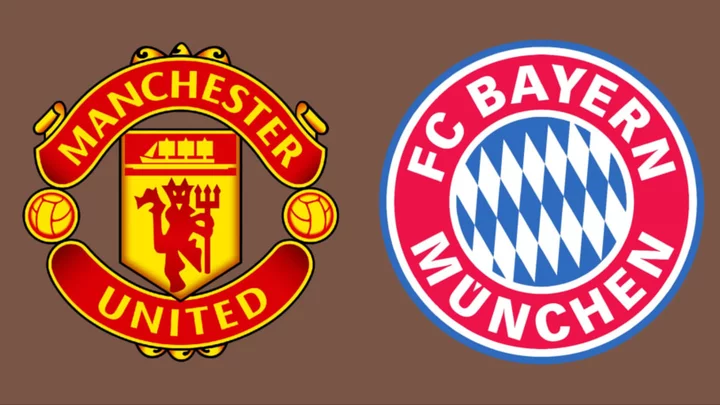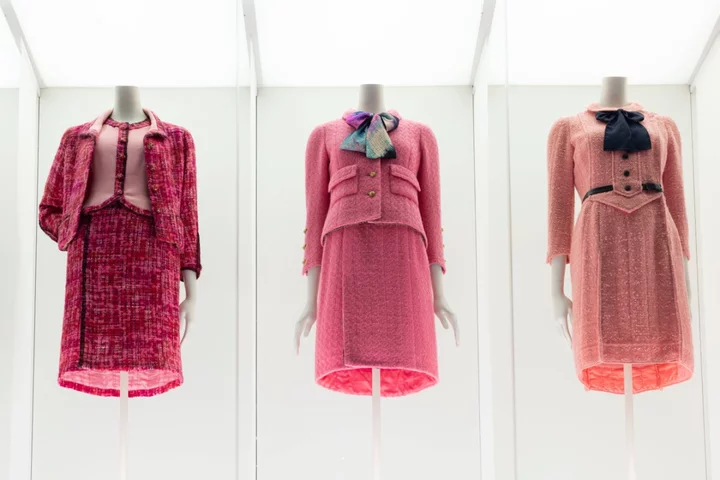
France welcomes EU probe into Chinese electric vehilces - minister
PARIS French Europe Minister Laurence Boon on Wednesday welcomed an anti-subsidy investigation into Chinese electric vehicles launched by
2023-09-13 18:29

Bill Gates, Elon Musk and Mark Zuckerberg are meeting in Washington to discuss future AI regulations
Some of the most influential voices in the tech industry are set to meet with federal lawmakers Wednesday morning as the US Senate prepares to draw up legislation regulating the fast-moving artificial intelligence industry.
2023-09-13 18:25

Rugby World Cup: Red card rules explained
Refereeing, head collisions and player safety again made the headlines on the opening weekend of the Rugby World Cup with a number of contentious incidents. The most high-profile came on Saturday when an England player was shown a red card for the fourth time this year, as Tom Curry was sent off early in his side’s win over Argentina, following a head-on-head collision with Juan Cruz Mallia. However, apparent inconsistency among officials irked many, especially on social media, with other incidents of head contact across the weekend not being punished as severely. Later in that same match, Santiago Carreras only received a yellow card despite his leap in attempting to charge down a George Ford kick seeing his hip make contact with the England No 10’s head. During South Africa’s impressive 18-3 win over Scotland, Jesse Kriel’s tackle on Jack Dempsey in which his head clattered into that of his Scottish opponent wasn’t even reviewed by the TMO and hasn’t subsequently been cited, while Chile captain Martin Sigren was only sin-binned despite a head-on-head collision while tackling a Japanese attacker. But what are the laws around head contact and high tackles that referees are following and how do they decide on the punishment? Here’s everything you need to know: What are World Rugby’s laws on head contact? Head-on-head contact in the tackle comes under Law 9 of the Laws of Rugby Union, which covers foul play. Law 9.11 dictates “Players must not do anything that is reckless or dangerous to others, including leading with the elbow or forearm, or jumping into, or over, a tackler” and Law 9.13 goes on to say “A player must not tackle an opponent early, late or dangerously. Dangerous tackling includes, but is not limited to, tackling or attempting to tackle an opponent above the line of the shoulders even if the tackle starts below the line of the shoulders.” If a player breaks these laws and the act is deemed to be reckless or dangerous, then the referee is entitled to issue a yellow or red card. World Rugby also clarify the intent of the laws, stating in their guidelines that: “ Player welfare drives World Rugby’s decision making for zero tolerance of foul play, especially where head contact occurs. The focus must be on the actions of those involved, not the injury – the need for an HIA [a Head Injury Assessment] does not necessarily mean that there has been illegal head contact.” What are the punishments for head-on-head contact? Ok, this is where things get technical and debates start to occur. In March 2023, World Rugby issued their latest ‘head contact process law application guidelines’ to guide referees on whether foul play has occurred and how it should be punished. The referee has to go through a four-step process (detailed below) to determine the extent of the foul play and the sanction. The four steps are: Has head contact occurred? Was there any foul play? What was the degree of danger? Is there any mitigation? Step 1 (has head contact occurred?) is relatively straightforward, with head contact including the head and the face as well as the neck and throat area. If any head contact is made at all, we move on to Step 2. Step 2 (was there foul play?) is a touch more complex. The referees are told to consider whether the head contact was either intentional, reckless or avoidable – e.g. the defender is always upright. If it was, the tackler will be penalised and they move on to Step 3. However, if the head contact was deemed not to be foul play, the game continues. Step 3 (what was the degree of danger?) – judged from high to low – determines the initial punishment. A degree of high danger is judged on any of: direct contact rather than indirect, a high-force impact, a lack of control from the tackler, the incident occurring at high speed, the tackler leading with the head/shoulder/elbow/forearm or the tackle being reckless. If the referee judges there to be a high degree of danger, a red card will be shown. Meanwhile, low danger is judged as indirect contact, low force, low speed or no leading head/shoulder/forearm/swinging arm and a yellow card or even just a penalty to the opposition may be awarded. The final step, Step 4 (is there any mitigation?) determines whether the punishment can be reduced by one grade (i.e red card down to yellow card or yellow card down to just a penalty). Mitigation includes a sudden or significant drop in height or change in direction from ball carrier, a late change in dynamics due to another player in the contact area, a clear effort from the tackler to reduce their height or the tackler having no time to adjust. However, mitigation will never apply for intentional or always-illegal acts of foul play. What about the Foul Play Review Officer/Bunker review? Introduced for this World Cup was the Bunker review system. This allows the referee to issue a yellow card to a player, sending them to the sin-bin while play goes on, where a Foul Play Review Official (FPRO) will then take another look at the incident and determine if the yellow card should be upgraded to red, allowing the game to continue rather than a long stoppage to debate this. This is what happened to Curry against Argentina. The referee crosses their arms to indicate a Bunker review will take place. Once a player is in the sin-bin, the FPRO has up to eight minutes to review the decision and decide if it warrants upgrading to a red card. If not, the player will return to the field after their 10 minutes in the sin-bin has elapsed. Read More Tom Curry ban: How many games will England star miss after red card vs Argentina? ‘Ruining this World Cup’: TV presenter slams ‘grotesque’ refereeing as Wales beat Fiji George Ford plays the pragmatist as England finally come to the boil in Marseille cauldron South Africa explain use of signals during Scotland win National anthems are ruining the Rugby World Cup – they must be changed now Tom Curry banned after red card in Rugby World Cup against Argentina
2023-09-13 18:22

McCarthy faces a threat to oust him as speaker. Here's how that could work
The impending showdown on Capitol Hill over government funding represents a significant leadership test for House Speaker Kevin McCarthy. The road ahead is rocky as the speaker faces tough vote math, major challenges and the potential threat of a conservative revolt against his speakership.
2023-09-13 18:17

Sudan country profile
Provides an overview of Sudan, including key dates and facts about this northeast African country.
2023-09-13 17:46

Biden campaign corrals high dollar donors as reelection effort begins to rev up
President Joe Biden's campaign is assembling top donors in Chicago this week with questions looming about how the campaign's high dollar and grassroots donor operations will fare as a key fundraising deadline approaches at month's end.
2023-09-13 17:20

Free agent wingers Man Utd could consider signing
Weighing up free agent winger options for Man Utd amid uncertainty over Jadon Sancho & Antony.
2023-09-13 16:58

EU to assess punitive tariffs on Chinese electric cars
BRUSSELS (Reuters) -The European Commission started an investigation on Wednesday to into whether to impose tariffs to protect the European
2023-09-13 16:55

Manchester United vs Bayern Munich: Complete H2H record
A complete rundown of Man Utd's head-to-head record against Bayern Munich.
2023-09-13 16:48

Explainer-What can Australia's labour tribunal do in Chevron's dispute with LNG workers?
By Lewis Jackson and Renju Jose SYDNEY Chevron has asked Australia's Fair Work Commission (FWC) to intervene in
2023-09-13 16:17

China unveils 'blueprint' for Taiwan integration while sending warships around the self-ruled island
China on Tuesday unveiled a plan to deepen integration between the coastal province of Fujian and self-governing Taiwan, touting the benefits of closer cross-strait cooperation while sending warships around the island in a show of military might.
2023-09-13 15:59

Gabrielle ‘Coco’ Chanel was the first superstar fashion designer, says curator of V&A exhibition
As well as introducing groundbreaking garments for women, Gabrielle ‘Coco’ Chanel embodied her brand in a way no other designer had done before, a new exhibition highlights. Gabrielle Chanel. Fashion Manifesto – at London’s V&A Museum – traces the life and work of the famed French designer, who was born in the Loire Valley in 1883 and taught to sew by nuns in the orphanage to which she was sent aged 11, when her mother died. “Before her, designers weren’t really known,” says Oriole Cullen, curator of modern textiles and fashion and the V&A. “Their names were known, but they weren’t visible figures within society.” Starting out as a seamstress and cabaret singer, before establishing herself as milliner, Chanel later turned her focus to couture fashion and began designing casual clothing for women, inspired by the menswear of the era. “The Chanel brand as it stands [today] is really based on these ideas that she ushered in 100 years ago,” Cullen says, which is where the exhibition title comes from. “The meaning of that is really about a template that Gabrielle Chanel set out at the very beginning of her design career and came back to, reimagined and reinvented throughout her long career of sixty years.” Bringing together nearly 200 outfits, the show features items from the opening of her first millinery boutique in Paris in 1910, to the showing of her final collection, two weeks after she died in 1971. Signature designs on display include little black dresses, tweed suits and quilted leather handbags – the most iconic of which is the 2.55 bag. “The 2.55 has never really gone out of fashion since she designed it in 1955,” Cullen says. “That is fascinating in terms of high fashion, that an object can stay the course for such a long time and still be relevant.” Part of the upper echelons of French society, Chanel initially relied on wealthy lovers, such as French ex-cavalry officer Etienne Balsan and English polo player Arthur Edward ‘Boy’ Capel to fund her boutiques. Later becoming a celebrity in her own right, she amassed a personal fortune, thanks to the success of her fashion, accessories and cosmetics lines. “The perfume Chanel No5 was introduced in 1921, but then introducing make-up in 1924 and skincare in 1927, she was really ahead of her time,” Cullen says. “It’s something she was doing because she was designing for herself.” Chanel is credited with helping to liberate women from the constricting corsets and long skirts that were de rigeur at the turn of the century, and for popularising softer textiles, such as jersey. “She cuts her garments with high armholes, so you can lift your arms over your head,” Cullen continues. “She thinks about fabrics that are practical, and skirt lengths you can move in.” The exhibition – which was originally staged at Paris’s Palais Galliera in 2020 – highlights the brand’s UK and Ireland connections via British Chanel Limited. “This was an umbrella company set up in 1932 to work with an array of British textile manufacturers,” Cullen explains. “From lace in Nottingham, cotton velvets from Manchester, wools from Huddersfield, and also voiles and silks from Carlisle. “One of the other companies she worked with was the Old Bleach Linen Company, which is based in Randalstown in Northern Ireland.” Split into 10 sections, the exhibition concludes with a recreation of the mirrored staircase from Chanel’s Paris atelier. “Gabrielle Chanel used to sit at the top of the stairs when she was having presentations,” Cullen explains. “The models would descend and this faceted mirror would reflect back the audience’s faces to her, so she could read the mood in the room.” Gabrielle Chanel. Fashion Manifesto opens at London’s V&A Museum on September 16. Tickets available at vam.ac.uk/chanel. Read More Charity boss speaks out over ‘traumatic’ encounter with royal aide Ukraine war’s heaviest fight rages in east - follow live 6 times Kate has worn London Fashion Week designers Pro-gamer Jukeyz ‘died for two minutes’ after cardiac arrest which left him ‘scared to sleep’ Young people not snowflakes or wasters, says curator of rebellious fashion exhibition
2023-09-13 15:47
